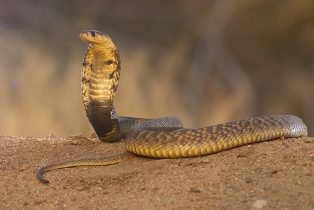You cnidarians (Phylum Cnidaria), also known as coelentered, are a group of invertebrate animals that represent the sea anemone and the Jellyfish. They have a very simple body, but a little more complex than the body of poriferous.
The most striking feature of cnidarians is the presence of structures called cnidocytes, which provide defense to the animal. We can observe two basic bodily organizations in the body of cnidarians: the polyps and the jellyfish. Currently, around 10,000 species are recognized, almost all marine.
Read too: Invertebrates — animals that do not have a skull and spine
Characteristics of cnidarians
the cnidarians are simple animals that live in the aquatic environment, mainly marine, and which have a body wall formed by two layers of cells: an outer layer, called the epidermis, and an inner layer, called the gastrodermis. Between these two layers, there is a layer of gelatinous consistency called demesoglea, which usually has no cells. Mesogleia is well developed in jellyfish.

These animals have a body structure that resembles a bag. Inside, there is a cavity called the gastrovascular cavity, where the digestion process takes place. This cavity is connected to the external environment by a single opening (mouth), which works both for the entry of food and for the exit of digestion residues. The surface of the cnidarian that presents the mouth is called the oral surface, while the region opposite it is called the aboral surface.
the cnidarians have a series of tentacles, which are arranged around the mouth. The tentacles help to capture food and have structures on their surface called cnidocytes, that are cells specialized ovoid or rounded shapes.
In these cnidocytes, the so-called cnidas, structures that have the shape of a capsule. The most common type of cnidas are the nematocysts. These structures consist of a capsule that has a filament wound inside. When stimulated, the filament is fired and pierces the prey's body. THE stinging substance present in the structure helps in capturing food, causing paralysis and even death.

The cnidocytes are the rresponsible for the famous "burns" caused by jellyfish, when they touch the skin of bathers. Some species, however, cause much more than burns. The so-called sea wasps, found in Australia, have a toxin capable of causing respiratory arrest and cardiovascular collapse in humans.
the cnidarians do not have complex systems. Digestion, for example, begins inside the gastrovascular cavity, where food undergoes enzyme action, and is then completed inside cells. For this reason, we consider that the digestion of cnidarians occurs in a extracellular and intracellular. These animals are practically all carnivores.
All the process ofexcretion in cnidarians is done by diffusion by the bodily surface. In cnidarians there is also no complex breathing system, being the gas exchanges carried out on the surface of the animal's body.

Youcnidarian nervous system is of the typediffuse. This means that, in these animals, nerve cells are spread throughout their bodies, forming a large nerve network. Thus, the cnidarians have no brain.
Read too: Jellyfish accidents
Polyps and Jellyfish
When we observe the body structure of the cnidarians, we verify the presence of two body variations: the polyps and the jellyfish. Some organisms have a life cycle that varies between polyp and jellyfish; others, however, spend their entire lives in one form.
You polyps are usually sessile, not showing an active move. Some species, however, move slowly through the substrate, and others can “swim” by bending their bodies when they feel threatened. The polyp's body is normally cylindrical, and its mouth is turned upwards, surrounded by tentacles. As an example of polyps, we can mention the sea anemones and hydras.

At jellyfish, in turn, swim actively through the contraction of your body. Its shape resembles an umbrella and its mouth is turned down. As in polyps, there is the presence of tentacles around the mouth. As an example of jellyfish, we can mention the Jellyfish.
Reproduction of the cnidarians
Cnidarians can reproduce so much sexual how much asexual. One form of asexual reproduction is the budding, in which the development of a bud is observed, which later stands out, giving rise to a new individual. The sprout can also remain connected to the body of the animal that originated it and form, in this case, colonies. Budding is observed, for example, in corals and hydras.
THE sexual reproduction is the one that involves gametes. In these animals we observe different processes, depending on the species analyzed. In the hydra, for example, we have species of separate sexes, that is, males and females. Males release sperm into the water, which fertilize eggs present in the female's ovary. A capsule is then formed with the embryo, which develops into a young hydra. The capsule ruptures when the environmental conditions are right, and a new hydra emerges.
Read too: Are there immortal beings?
Life cycle with alternating generations

In some species, the alternation of generations, with a polyp and a jellyfish phase. Considering, for example, the cnidarian of the genre Obelia, it is possible to observe, during the life cycle, an asexual polyp and a sexual jellyfish. In the polyp stage, a new individual is formed by budding. In this case, the polyp gives rise to a small jellyfish, which develops and becomes suitable for reproduction. Jellyfish, which have separate sexes, are responsible for producing gametes. The female and male gametes are released into the water, meet and form a zygote, which gives rise to a larva. This larva attaches to the substrate and gives rise to a new polyp.


